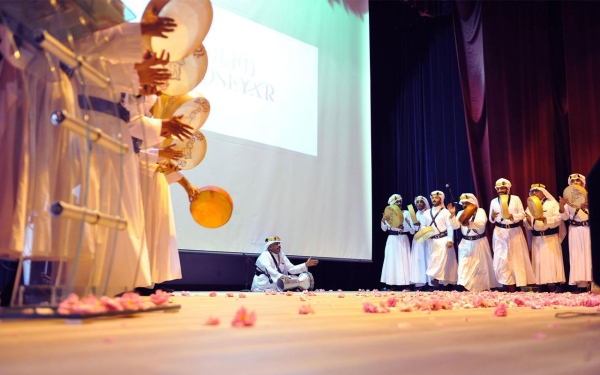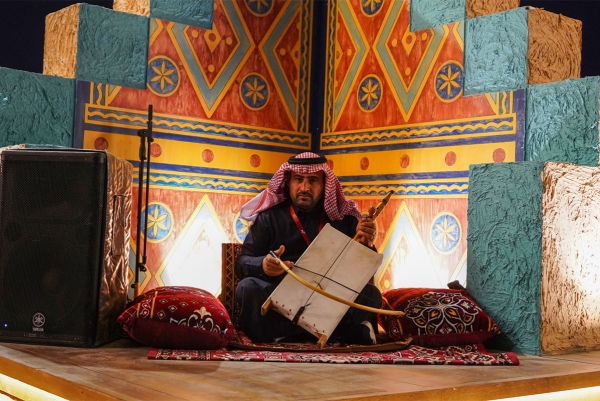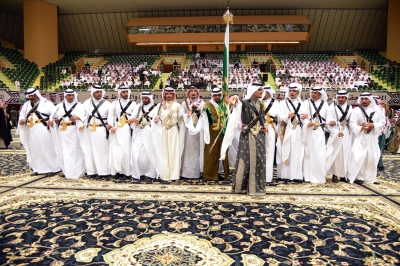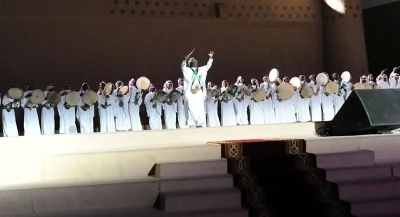

Saudi Folk Art Tools are a collection of tools used in performing various types of traditional arts, including folk songs, dances, and popular games in the Kingdom of Saudi Arabia. These tools represent national traditions passed down through generations. Their uses and artistic styles vary with the nature of each province in the Kingdom, reflecting the historical and cultural identity.
Types of Saudi folk art tools
The types of folk art tools vary according to the provinces and the arts for which each area in the Kingdom is known. Some of these tools include:
Drums: These percussion instruments are used by striking them. They are made from wood or metal and have thin leather skins stretched over both ends. Drums are used in various dances, such as the tanboura, bastah, qadiriyah, and zir.
Tambourines: These are rhythmic musical instruments that produce a single tone called bazeer. They are used during folk dances and songs such as the bahri dance, the qasba, and the maqtof and taqateef dances.
Bendir: These are circular wooden boards surrounded by four copper cylinders. There are two types: the Salami bendir and the Isawi bendir.
Simsimiyya: A string instrument known as the sailors' oud and their lyre, it is particularly famous among the people of Yanbu. Handcrafted, it has its unique melodies and dance, and accompanies the performance of certain songs.
Cymbals: Made from resonant copper and small in size, the cymbal player uses a pair of them. They are used in certain dances, such as the Ajl dance, which is famous in the city of Yanbu.
Rifles and gunpowder: These are means of expressing horsemanship and bravery, used in certain performances such as the ta'ashir dance.
Tar: A round wooden frame with a radius ranging from twenty to thirty cm, with goat skin stretched over one of its openings and copper jingles attached inside. It appears in some dances, such as the traditional khabiti dance and the yali dance.
Nay: A handcrafted wind instrument that is part of the traditional artistic heritage passed down in the Hejaz Region.
Rebab: A traditional instrument of the Bedouins and considered the queen of folk arts in the northern regions of the Kingdom. Its most important styles include the mas'hub and hijini.
Mizmar (al-Boos): One of the oldest folk art instruments introduced to the Kingdom, it is a piece of hollow wood with small holes that are alternately covered and uncovered by the player's fingers while blowing to produce the melody. There are two types: the mijwiz, consisting of two reeds, and the single-reed mizmar.
Tools of the Najdi Ardah Dance
The Najdi Ardah (Sword Dance) is a traditional folk dance that combines poetry, drum music, and rhythmic dance. It was performed by warriors in the Najd region of central of the Kingdom before facing their opponents on the battlefield. It served as a means for men to showcase their weapons and spirited enthusiasm, evoking the battles led by the Founding King Abdulaziz Bin Abdulrahman Al Saud.
The men wear traditional attire consisting of a long embroidered coat called the "daglah," which features straight cuffs and six buttons. Underneath, they wear a loose white robe with long triangular sleeves known as the "marodun." They cinch their waists with leather ammunition belts slung diagonally across their chests and carry swords in their right hands. The chanters recite poetic verses, and the drummers stand between the sword bearers. Another participant carries the national flag, all within a lively festive atmosphere.
Two types of drums are used during the performance of the Najdi Ardah: the large drum (takhamir) and the small drum (tatleeth). Sometimes, participants raise rifles alongside their swords during the performance.
Related quizzes
Related articles


